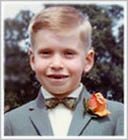An Illustrated History of Old Sutton in St Helens, Lancashire
Part 66 (of 96 parts) - Memories of Sutton Part 16
Compiled by Stephen Wainwright ©MMXXII
'Growing Up in Sutton Manor' by Alan Pugh
i) GRANDAD SPAK THE COSSAK COBBLER
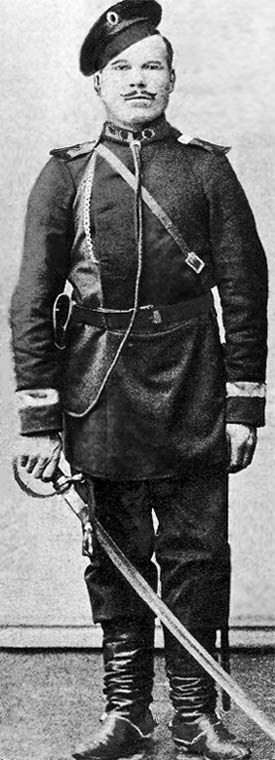
Grandad had been a Cossack, having been press-ganged when fifteen-years-old. He was strict with us but we loved him. Grandad was a shoe repairer or cobbler and he also made clogs. My greatest delight was to hang about Grandad Spak’s shed, or rather sheds, at the top of Pendlebury Street, which in those days was a cul-de-sac. There was always something interesting there for an inquisitive kid with smells of leather, hot wax and freshly cut timber in the air. The hot wax was what Grandad used to cover the edge of the soles and heels on repaired shoes. It came in either black or brown sticks and he used to hold the stick in one hand to a lighted candle, and then drip the hot wax onto the edge of the sole and smooth it with a special tool. Doing this sealed the exposed edge of the leather.
This hot wax also came in handy as a first aid whenever he cut himself. Grandad’s skin was as tough as the leather he used for his repairs, but occasionally he would cut himself. Then he would carry out the same procedure as for the shoes. He would drip the hot wax into the cut and seal it up. Of course this was a practice the old sailors used, dripping hot caulking tar into their wounds. But because Grandad and the old sailors used this method, didn’t matter one jot to my Mum. I once went home proudly displaying my wax-coated cut on a finger. She went, to use a modern term, 'absolutely ballistic'.
Dear Grandad was a man of few words by nature, but also because he had never bothered to fully learn our language. However he could make himself understood with just a few actions of his arms. Sometimes these arm actions included a wide leather belt, brass buckled, which he would swing at me if I was getting under his feet….or more likely under his skin. I was always at Grandad’s watching him working, repairing shoes, making the clog soles out of sycamore. I used to turn the huge wet stone that he used to sharpen his tools on. I had to jump up to grab the handle and the weight of my body plus gravity would get it turning.
When Grandma and Grandad went to live at Tower Cottage in the grounds of Loyola Hall, the Jesuit retreat house in Rainhill, he used to ride the five miles to his workshop each day. He would ride what was commonly known as a ‘sit-up-and-beg bike’. The geometry of the frame was such that the rider sat in a very upright position. Grandad used to wear a black bowler hat and always the same navy blue coat with a black velvet collar. Each evening on his way home he would call in to see Mum and always sat on a chair by the door into the kitchen. I can see him now, leaning forward with arms resting in his knees, hands crossed. He and Mum always conversed in Lithuanian, so we did not know what on earth they were talking about. But always, as he was leaving, he would take out of his coat pocket three small bags of sweets for myself, sister Teri and brother Gerard. There’ll be more about clogs and Grandad later.

Cossack Peter Spakauskas ‘Grandad Spak’ pictured about 1889
ii) MY ST.THERESA SCHOOLDAYS
I attended St.Theresa's RC school from 1938 to 1947. I can clearly remember my first day at school, with my Mum taking me and leaving me with a very large lady. Her name was Miss Turley and she was in charge of the first year. I remember her being very kind and cheerful, taking me to my desk which I shared with another kid. Then a bell rang and we were all given a small bottle of milk each. I think that sometime in the afternoon we all lay down on small camp beds. In the next class, Standard One, we had Miss Whittaker as our teacher. She was kind and quiet with snowy white hair and a great soccer fan. It was Miss Whittaker who gave us our first lessons on how to kick a ball properly. You will all know the old saying "Apple for the teacher". Well, in our class the reverse was the norm. Miss Whittaker would bring each child an apple every other day, and there were thirty-eight children in her class! She could be strict and handy with the cane if you deserved it.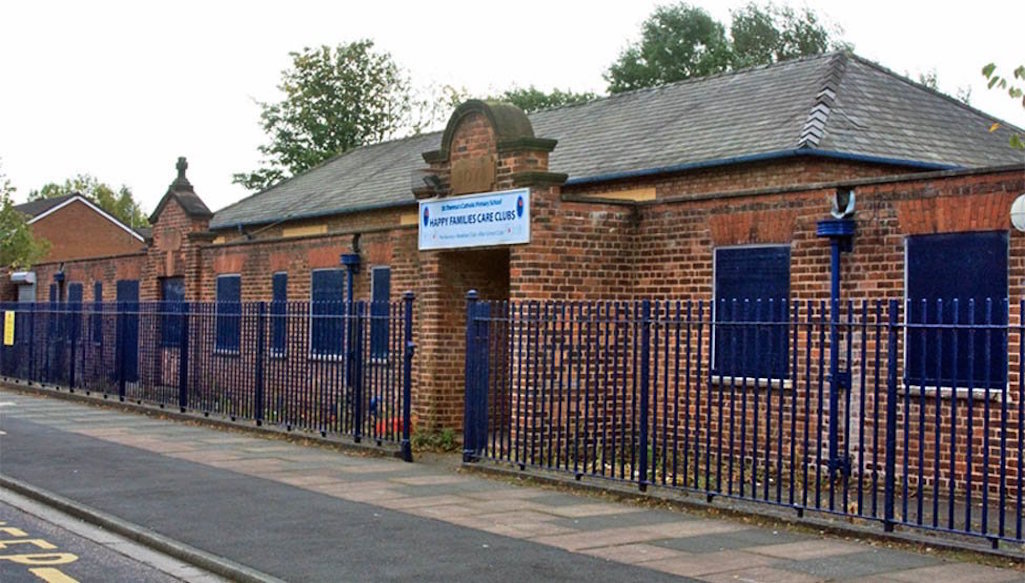
The St. Theresa infants / junior school photographed just before demolition in October 2011

St. Theresa infants / junior school just before demolition in October 2011

St.Theresa’s junior school in 2011
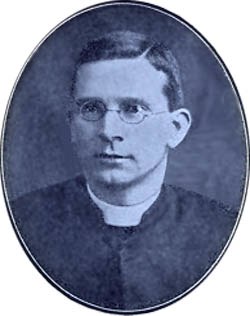
(Contributed by Rev. David Green)
In the middle section was housed Standard Two, which was Miss Parker’s empire. Being taught by her I was following in my uncles' footsteps, because I think all of them were in her class. At least Uncle Alban and Uncle Tony were, because their initials were carved on a desk. Miss Parker was a very tall, gangling woman, unmarried with pure white hair, even whiter than Miss Whittaker's. She walked around the classroom with long strides and swayed from side to side. Miss Parker wore thick, horn-rimmed spectacles, which were always slipping down her nose and she used to cycle to school from her home in Rainhill on a sit-up-and-beg bike.
Even now as I think of her, I can imagine the strong smell of TCP which was always around her. She had a large bottle of TCP on a shelf behind her desk and each morning before we said morning prayers, she dosed herself with a spoonful of the stuff. If any of the children fell in the playground and grazed themselves, out would come the TCP and liberal quantities were applied to the injury. If anyone had a cough or cold the dose was two spoonfuls, and a sore tummy was put to rights with just one spoonful. But TCP aside, Miss Parker was a good teacher and was wonderful with us kids. Everybody loved her even though we never received an apple every other day from her. We had TCP instead! We must have been the healthiest kids in Sutton Manor and the smelliest!
Being on the other side of Gartons Lane from the main school, we did feel as though we were in our own little world. First of all we did not have to share the playground with other kids. We were not being bullied by any of the older children. But more important than anything else….there was NO Sister Agnes. She was a nun who lived in the convent and was head of the junior school. She was very strict and seemed to take a delight in walking along the corridor outside the classrooms, and looking in through the window in the door. Woe betide any child whom she caught talking or not paying attention.
She would rush into the classroom, her heavy black habit swishing between the desks, and would grab the guilty child by the ear and then pull him or her to the front of the class. There she would take hold of a cane and give the child a stroke on each hand. I do feel Sister Agnes went too far with her punishment. Even at the tender age of five years old I thought the Sister only wanted to punish children as I never heard her utter a word of praise. She rarely came over the road to our class and when she did, we could see her coming. When she came into the classroom we were all little angels, very attentive and concentrating on our lesson, absolutely fascinated at what Miss Parker was telling us.
While I was in Standard Two, the National Fire Service commandeered the large room used by the parish. War had been declared and so a fire appliance was stationed in every village. As a result we had the welcome distraction of watching the fire engine outside with the firemen doing fire drill. I think there were three crews based there. We always looked forward to one of the crews in particular being on duty, as the officer in charge used to allow us to board his fire engine. It was then that eighteen youngsters decided they wanted to be firemen!
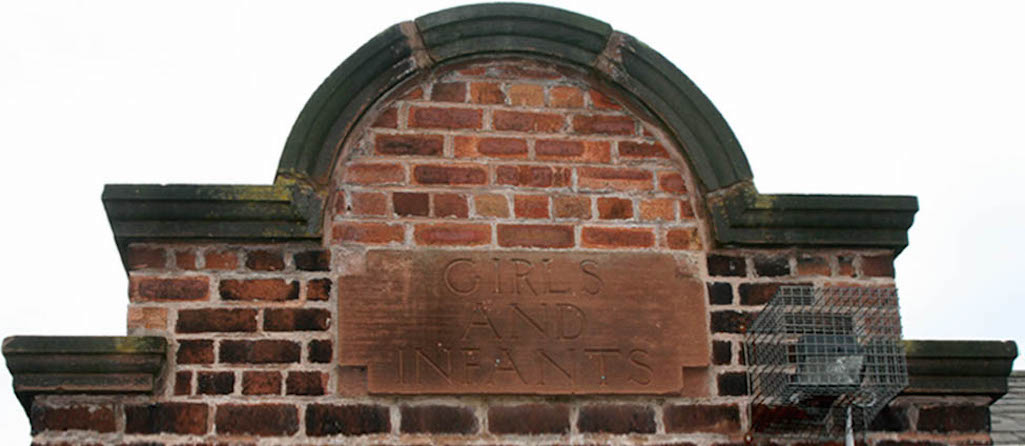
The St. Theresa infants / girls school in Cannon Street photographed just before its demolition in October 2011

St.Theresa infants / girls school in Cannon Street just before demolition in 2011

St.Theresa infants / girls school just before demolition in 2011
Who can forget Sister Vincent, the school headmistress? She was another one handy with the cane. And we knew when she was in a bad temper because Sister used to tap the top of her head with her fingers. We had a lad in our class, Fred Spriggs, who as well as being the tallest in the class was also the strongest. One day Sister Vincent gave him the cane and as the stick landed on his hand, Fred kept hold of it and pulled it out of her hand. He was our super hero!
The class numbers in those days were quite high, but I can remember some of the boys and girls such as Peter Kilgannon, Eddie Rice, Leslie Barrett, Bernard Martin from Clock Face and Richard Gaskell, who unfortunately, died quite young. Then there was Ronnie Conway and the Morris brothers from Gartons Lane, both great sportsmen and Micky Davock who, I believe, went on to play for Stockport County. Plus Dennis Connelly (brother of John who played for Burnley, Man United and England). Then the girls: Mary Gibbons, Margaret King (from the well-known sporting family), Joan Halsall, Sylvia Fairclough and Joan Shawcross, whose Dad was manager at Roughdales Bricks in Chester Lane. All the lads loved Joan! Then there was Jean Le Noun, a refugee from the Channel Isles. I often wonder what happened to them all, because I lost touch when I left St Theresa's. They were all good kids and when I left I missed them.
iii) THE WAR YEARS IN SUTTON MANOR
While I was in Standard One something happened which was to change my life, the lives of my family, and the lives of millions of people in the civilised world. On Sundays our little family - Mum, Dad, Teri and Gerard - always went to eight o'clock Mass. The Church was only about half a mile away and we would walk, Teri in between Mum and Dad and Gerard and myself bringing up the rear. Mum was forever looking over her shoulder to make sure we boys were behaving ourselves and were not kicking stones on the dirt path. In church we always sat in the centre pew, third row from the front. Nobody else ever sat in that pew. That was the 'Pugh's Pew' and was sacrosanct. Why, whether by habit or not, I do not know, but I still go into the third row from the front in any church I visit. I suppose old habits die hard.Every Sunday without fail, Dad's brother Jack would come after the 11 o'clock Mass for a cup of tea, and to have an argument with Dad about the advantages of communism. "Mass at eleven and Joe Stalin at twelve", Mum used to say. It was during one of these arguments that something momentous happened. I had come in from the garden, where I had been playing, and then went in to the living room. The wireless was on and Mum, Dad and Uncle Jack were sitting listening to it and looking very serious. And then Mum started to cry and Dad went to console her. Uncle Jack told me we were at war with Germany and I went racing out into the garden in Jubits Lane shouting "We’re going to fight the Germans", and mowing everything down in front of me with an imaginary gun.
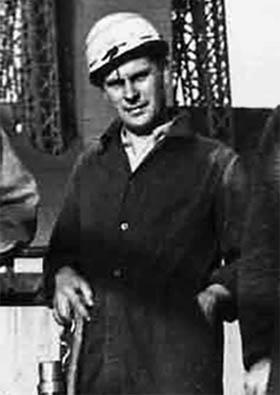
The sound seemed to go on for a long time. I suppose it only lasted seconds, but it seemed to be right over us. Then a huge tremor seemed to go through the house and then silence. I heard Dad whisper, "God help us, it's a time bomb", and I remember thinking my Dad was really clever knowing all about bombs. The silence seemed to grip us. We just sat there on the floor inside our cage as though waiting for something. I remember Mum had her arms around Teri and Gerard, who were fast asleep. Dad was holding me close to him and somehow I felt very safe, as though nothing was going to happen.
I remember Mum making the sign of the cross on herself and on the heads of Teri and Gerard. Then suddenly there was banging on the front door and somebody was calling Dad. He crawled out of the cage and we all followed him. Gerard was crying because he had been disturbed by all the commotion. Our visitor was one of our neighbours, Mr. Gibbons, who was the local air raid warden. He was telling us to get out of the house because there was an unexploded bomb at the bottom of our garden. Mum said she would go back and get some clothing as we were all in our nightclothes. But Mr. Gibbons would not let her. Outside it was dawn and all our neighbours were rushing towards the end of Jubits Lane, escorted by two policemen.
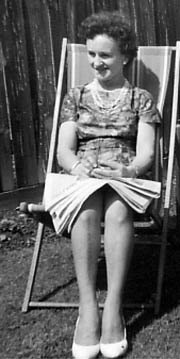
Of course all this had gone on away from the crowd standing at the bottom of the lane. No one had seen Grandad Spak pick me up because all eyes were on the houses. Everybody was waiting to see no. 80 Jubits Lane, our home, go up in small pieces! So it was not until sometime afterwards that Mum realised I was missing. By this time the army had been called in to deal with the bomb and I learned much later that a soldier and a policeman had gone into the house to see if I was there. A search was instigated of all the other houses and the surrounding fields. Mum and Dad were beside themselves with worry.
While all this was happening, Grandad had deposited me with Grandma at Tower Cottage, and had set off for his workshop again. And when he had got to Sutton Manor, the crowd of people was still there. Then Mum saw him and told him that I was missing. "He not missing. Boy at home at Rainhill. I take him", he said in his broken English. I can imagine the verbal lashing that Mum gave him. And because it would have been in Lithuanian, nobody could have known what she was saying. But I am sure they would have realised she was not saying, "Good morning, dear father, how nice to see you"! The whole lane was evacuated and it was six weeks before the bomb was disarmed. In the meantime we lived with Grandma and Grandad at Tower Cottage which I thought was the greatest place on earth.
iv) CHILDISH IMAGINATION, CLOGS AND SPORTS
It must be difficult for young people today to imagine life before television. However, there was a time when children made their own entertainment. A time when something called 'imagination' was put to full use. If the weather was dry we always played out doors. In fact the only time we Pughs were kept in was on Saturday mornings to carry out our chores. Then it was all hands on deck and my job was to clean and polish the brass ornaments that Mum and Dad used to collect. There seemed to be scores of pieces and it would take all morning to do it. Outside I could hear my friends playing and felt envious. I used to think how lucky they were that their parents did not collect brass. When Dad died, I inherited most of the brass, so now I still have the chore of cleaning it. Do things ever change?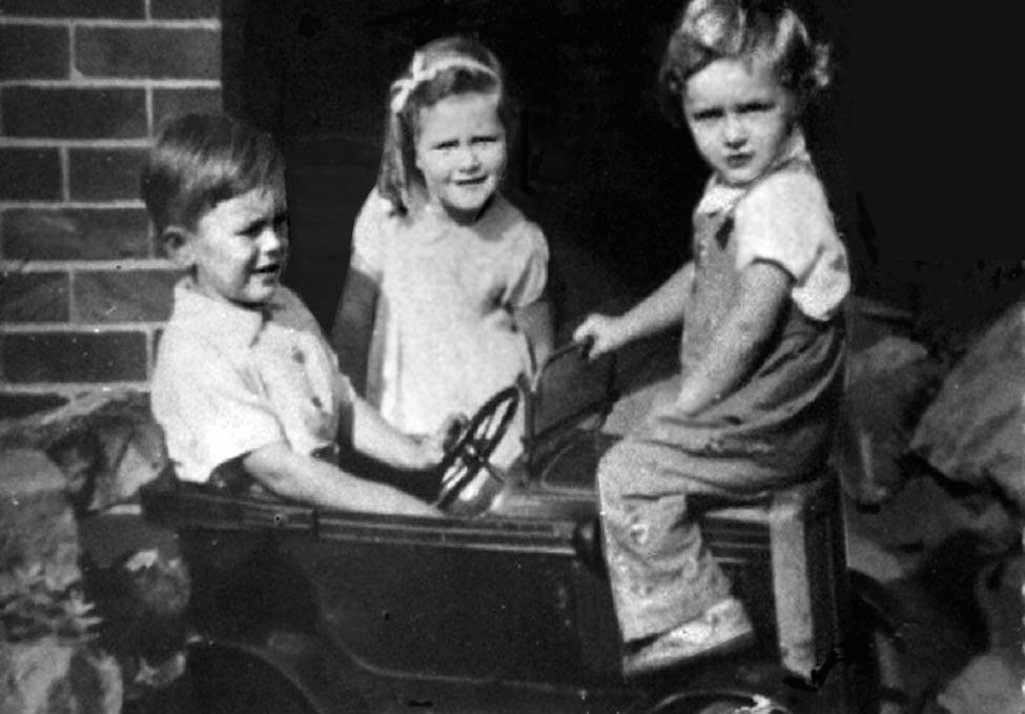
Young Alan with sister Teri and his brother Gerard - Contributed by Alan Pugh

Young Alan Pugh with sister Teri and his brother Gerard

Alan with siblings Teri and Gerard
When outside we kids played the usual games of soccer, rugby and cricket. Everybody knows there are eleven players in a football team but we sometimes played with as many as fifteen or sixteen to a side. The goalposts were made of our jerseys (sweaters) or discarded jackets. Our football was made of leather, stuffed with rags and newspapers. To kick it called for a superhuman effort, particularly when it was wet. And there was no such thing as bounce. When the ball hit the ground it either stopped dead or rolled slowly to a standstill. And if you were to head the ball, there was every chance of concussion!
These days nearly every kid wears trainers or shoes with soles originally designed to climb Mount Everest. In the mining communities, however, everybody wore clogs. They were a most economical type of footwear, cheap and very hard wearing. Football boots were unheard of and so we played our soccer in clogs. To be the victim of a kick from a clog was very painful and sometimes if you were lucky, the injury could be bad enough to keep you off school. It was amazing how serious a limp you had to adopt to convince your Mum that your were in terrible agony. I think almost every kid in St.Theresa's School wore clogs all made by 'Pe Spak' (short for Peter Spakauskas) as the locals called my Grandad.
Each pair of clogs was individually fitted and made for the wearer. Grandad carved the wooden sole out of sycamore. I remember I was once in his workshop in Pendlebury Street when a miner came in for a 'fitting'. Grandad had carved the sole roughly to the shape of the man's foot. But at the 'fitting stage', Grandad painted his foot with some purple dye and then the customer placed it on the wooden sole. The imprint left on the wood showed exactly where the man’s corns, bunions and other irregularities were. Then Grandad modified the sole to fit the foot, so the clogs were literally made to measure.
The uppers were made out of a single piece of stiff leather and nailed to the sides of the sole, with a small steel strip around the toe. Then the sole and heel were shod with a strip of iron nailed to the edge of the sole. It was an easy exercise to change the irons when they wore thin. Now, the girls did not have irons on their clogs. They used old cycle tyres cut into strips and nailed to the sole. But the boys wore REAL irons like their Dads. Only 'sissies' wore rubber and it was this method of shodding that sorted out the boys from the sissies. Also a boy could get more street credibility depending on how better he could make the sparks fly when he kicked the edge of the kerbstone.
Wearing clogs altered the way we walked. We kids tried to emulate the adults by scuffing the ground as we swung our legs. This made a satisfying clatter, particularly when walking on the concrete floors of the school corridors. Even Sister Agnes could not stop us from making a noise. So imagine over a hundred pairs of clogs clattering along the corridor at playtime! Clogs will always bring back memories of being awakened by the sound of the miners walking to Sutton Manor colliery at five in the morning. For nearly an hour the sound of clog irons on the road went on at a regular pace. And then at about five forty-five would be heard the sound of running clogs. These belonged to the lads who had overslept and were in danger of missing the last cage down the mine at six am.
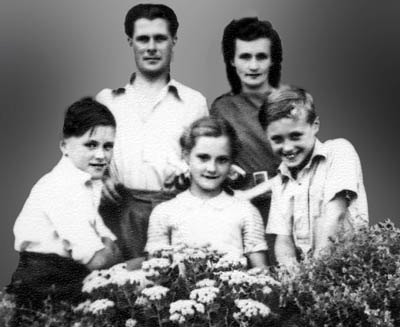
Wherever the piggy landed the striker had then to estimate how many running strides it would take him to get to the piggy. The fewer strides the better. So if the striker said he could reach the piggy in fifteen strides but actually took twenty, then those fifteen strides went to his opponent in the form of points. There were no handicaps in this game because in the unwritten laws of the game everybody was equal. "Quite so", you would say, "that’s fair". But it was difficult if a kid of my small stature was drawn against Ronnie Conway, who was over five feet tall when he was only seven years of age!
The equipment used in this game cost nothing. All that was needed was skill, energy and a bit of imagination, and all these were free. Then there was the wireless to listen to. Children’s Hour at five o'clock then Dick Barton Special Agent at half past six. When this programme came on, Jubits Lane was deserted because everybody was sitting around the wireless, listening to the nightly episode. Then after it had finished we would all meet to discuss it, each of us imagining we were Dick Barton.
Every Saturday afternoon there was a broadcast of a football match and again we would be glued to the wireless listening to the commentary. And we did not need slow motion replays to help us picture the goals being scored. During the war everything was in short supply with the exception of imagination. We were all endowed with that commodity and we put it to good use.
v) CHRISTMAS IN SUTTON MANOR
I was just five when WW2 commenced and I have no recollection of a Christmas before then. I do, however, have some vivid memories of wartime Christmas Days in Sutton Manor. Not only was food in short supply, but chocolate, sweets, some fruits and toys were also scarce. I think it was at this time that interest in do-it-yourself really started. Mothers became expert at making the meagre food ration stretch. They developed the art of camouflage, such as making a mediocre meal look appetising. Mum quite often 'converted' a simple turnip into a tasty fruit by soaking it for several months in water and a couple of spoons of sugar. At the end of the process it looked like pineapple and certainly did not taste like a turnip. It was different anyway and we used to enjoy it.One of Mum's many talents was sewing. She used to make all our clothes, either by hand or on the sewing machine. Dad’s old shirt would become new shirts for Gerard and myself. One of Mum’s worn out dresses would be turned into a pretty dress for Teri. Quite often she would work far into the night to finish some item of clothing. Of course, living in a small community such as ours, word soon got around about her skills at modifying and she was always busy.
Not only was Dad an expert at building air-raid shelters but he was also very handy at woodwork. These days we talk about recycling timber but believe me, Dad was recycling timber as far back as 1940. So a few weeks before Christmas of that year, he cut a brush handle into short lengths and suffered Mum’s wrath as a consequence. Each night we boys would watch him forming these short lengths of Mum’s favourite yard brush handle into the bodies of model aircraft. He would use only a heavy rasp and a sharp knife cleverly forming the fuselage of a Spitfire or a Hurricane or some other famous aircraft. The wings were made out of thin plywood (actually the base of an old drawer he once found in Grandad’s workshop). Shortly before Christmas, Dad finished building the aircraft. There were six of them, three each for Gerard and me. And that was the last time we saw them until Christmas Morning.

Our Christmas stocking was filled with a shiny red apple, an orange and other bits of presents such as a drawing book and crayons. Goodness knows how long Mum had waited in a queue for those oranges. The important thing was that we were satisfied with these few toys. We had seen them being made and had even handled them. But in our innocence we firmly believed that Father Christmas had delivered them.
Another Christmas I found a model of the Queen Mary, that beautiful old Cunard liner, waiting for me. Again Dad had made it out of timber and was practically perfect in every detail, except for the funnels. The actual ship had four funnels but mine only had one. That was because Dad could only find one empty cotton reel in the drawer of Mum’s Singer sewing machine! I had that ship for much of my childhood. It was painted and repainted, and had several new masts in its lifetime. But it gave me hours and hours of pleasure. Of course it would not float on water, but the tiled floor in the kitchen made a wonderful sea, though it was rather cold to lie on.
I remember one Christmas creeping down stairs, shortly after Mum and Dad had crept upstairs, and seeing a Hornby railway set laid out on the floor. I could not believe my eyes or my good fortune. To own a Hornby set was an automatic climb up the ladder in the street pecking order. I went back upstairs to bed but Mum standing on the landing blocked my way. Now at any other time of the year I would have been on the wrong end of a slap delivered with the accuracy of a Sam missile. But it was Christmas and I got away with a withering look.
vi) PEOPLE AND PLACES
I've lots of memories of Sutton Manor and Clock Face. At the junction of Gartons Lane, Chester Lane and Jubits Lane there was a coal yard owned by two brothers, Len and Bill Sharrock. They used to buy their coal from my Dad when he was in charge of sales at Clock Face Colliery. I remember going there as a kid to see a pet fox that Bill owned. He used to take it out for walkies on a lead!Does anyone remember Ponky Lane? Actually it was Four Acre Lane but for some reason everyone called it Ponky and it was years before I learned that Ponky wasn’t its actual name! On the corner of Pendlebury Street and Gartons Lane was the Union Jack Club. It was built on stilts about a foot high and as kids we used to crawl under the place. I remember one of my uncles pulling me out feet first and giving me a kick up the backside!
On the corner of Pollitt Street and Gartons Lane was a butcher's shop run by a lady name Elsie Gavin, a good friend of my Mum, and also a stalwart parishioner of St.Theresa's. Another butcher's was Fletcher's of Clock Face Road and my Uncle Bert was the son of J. H. Fletcher. He once told me that during the General Strike of 1926, there was no transport delivering meat to the shops. So Uncle Bert, who was then only 14 years old, 'borrowed' one of those huge steam propelled trucks and drove it from Sutton Manor to the Stanley Abbatoir, near Liverpool. On his way back with a load of meat on board, he was stopped by the police, who couldn't believe that he was only a kid, and only a small kid at that. When he died about twenty years ago, he was only 5ft 2ins. Anyway, eventually he ended up in court and the magistrate, on hearing his case, decided that he be allowed to continue driving, but only small vehicles. Of course in those days you didn't need a licence to drive.
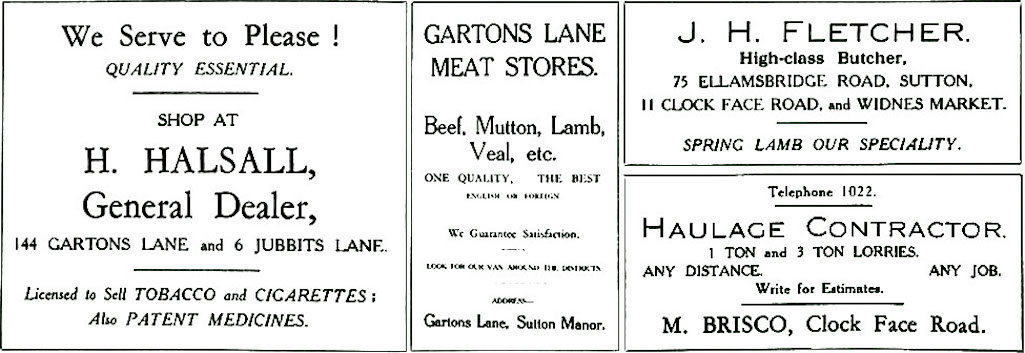
Taken from the 1931 programme for the foundation stone laying of St.Theresa's church - Contributed by Fr. Phil Swanson

Taken from the 1931 programme for St.Theresa's foundation stone laying

Sutton Manor adverts from 1931
I wonder if anybody remembers Farmer Carr who used to sell milk? He had his farm at the top of Walkers Lane, going out of Sutton Manor. He used to go around the houses with his horse and milk float and we would take our jug out to him to get it filled. Often his daughter, Hilda, would do the round. And talking of horses, I can vividly remember Sunday afternoons when people would drive down Jubits Lane in their ponies and traps. This was in the early years of the war when petrol was rationed.
Looking back to my early childhood, we were a happy family and I had a happy time. I left St.Theresa's in 1947 to go to a seminary to study for the priesthood. One of dear Fr. Holden's ambitions was for one of the boys in the parish to become a priest although it didn't work out for me. Two boys did eventually become priests, Fr. Bill Connolly from Jubits Lane and Fr. Shaun O'Haire from Pendlebury Street. In 1962 I married at St.Theresa's and left Sutton Manor for good, although I still have my wonderful memories.
